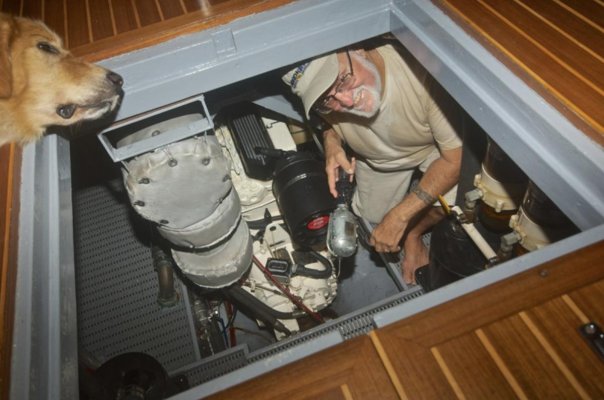Okay, there are Wesmars, ABT Trac and Naiads stabilizers for fins. Is the build quality and cost for all of them about the same? Any other differences?
Don't forget Quantum and Side-Power.
All offer a variety of options now including at rest. Controls differ as do mounting requirements.
Quantum was the pioneer in Zero Speed for large yachts. They and others also offer extendable fins. However, Quantum generally is aimed at boats larger than we're discussing.
Naiad was among the leader in hydraulics and was the standard in yachts from 80'-150'. They were also the leaders in digital.
Trac has shown themselves to be innovators. For instance, their winglet. In medium sized boats, I would say Trac is the most popular now in South Florida and while we've never owned any, but have had Naiad, I'd say Trac now has more fans in our area for most sized boats.
I'm less familiar with Wesmar so don't have a strong opinion on them.
However, I'm very familiar with Side-Power or Sleipner Vector Fin Stabilizers and highly recommend them for boats in the size range discussed here, especially semi-displacement as the Vector Fins don't cut into speed and are good boat at speed and at anchor. I thought they must be overhyped and while I read their tests on a Princess 56 I still had my reservations. On the Princess they claimed 97% roll reduction at 11 knots and 99.9% seasickness reduction. At anchor they claimed 66% reduction in average roll and 72% in maximum and a 90% reduction in sea sickness.
Well, we had them on a Sunseeker Manhattan 65. Planing hull with top speed of 32 knots and cruise of 26-28. Flybridge so tall boat. They did everything they promised and we were thrilled with them.
Now, my recommendation. Find what the builder has been using and if they've been working well, stick with what they know and have specifications and design for. Sunseeker uses Seakeeper and Side-Power and we chose Side-Power and were happy. Another brand we own uses Naiad and we chose Naiad and were happy. If we were purchasing a brand where the builder had a long time Trac relationship and no problems, then we'd go that route. To me there's a lot of value in having experience putting stabilizer B on Boat Q.
Also, some adapt to after market easier than others.



 My wife & I had the opportunity some years ago to take a 4 day cruise on a friends N57 to April Point, BC. We took the back way in and stayed at Nordstrom's lodge on Dent Island. Coming through the seymour narrows the next day, I had occasion to visit the ER and found it to be cavernous! A single engine Lugger with tons of space and height. Best I've ever been on.
My wife & I had the opportunity some years ago to take a 4 day cruise on a friends N57 to April Point, BC. We took the back way in and stayed at Nordstrom's lodge on Dent Island. Coming through the seymour narrows the next day, I had occasion to visit the ER and found it to be cavernous! A single engine Lugger with tons of space and height. Best I've ever been on. 